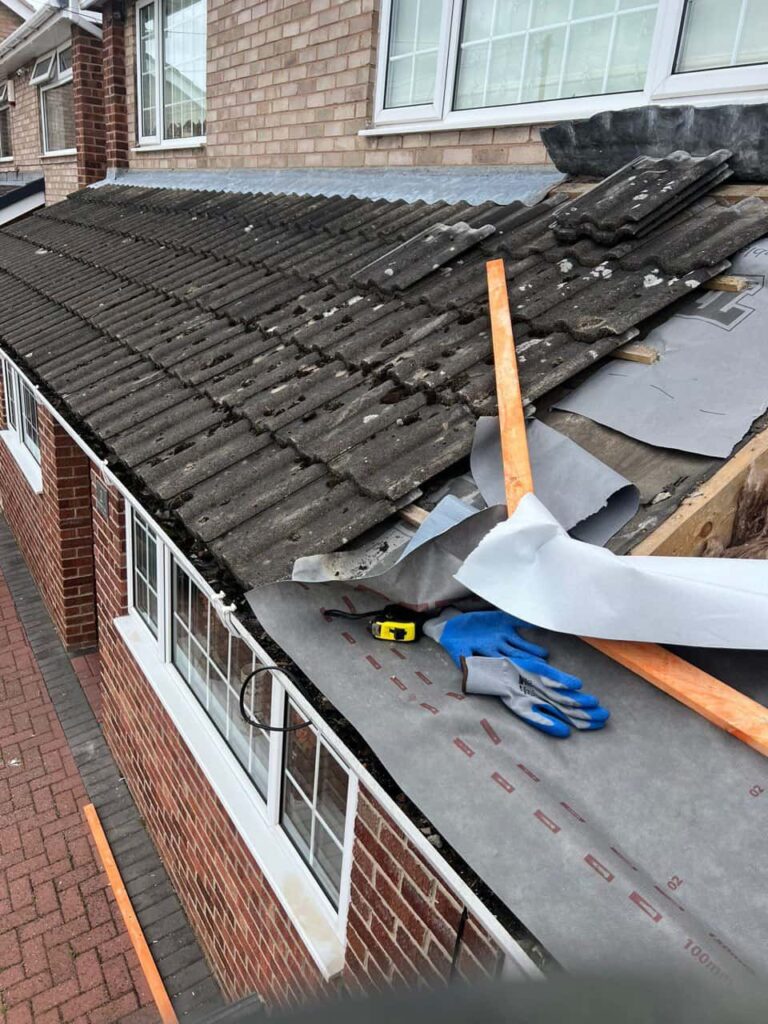Introduction
When it comes to preventing roof leaks, flashing plays one of the most crucial roles. It may not be the most noticeable part of your roof, but it’s essential in keeping water out of the vulnerable areas where tiles, slates, and roof joints meet other structures like chimneys, skylights, or walls. However, when flashing is poorly installed, even a brand-new roof can develop persistent and frustrating leaks.
At Godstone Roofing Repairs in Godstone, Surrey, we’ve encountered countless situations where incorrect flashing installation has been the underlying cause of ongoing water problems. Understanding how flashing works — and why improper fitting leads to repeat leaks — can help homeowners appreciate the importance of professional roofing workmanship.
What Is Roof Flashing and Why Is It Important?
Flashing is typically made from materials such as lead, aluminium, or galvanised steel, and is used to direct water away from roof junctions and seams. These areas are naturally more exposed to the elements, and without properly installed flashing, rainwater can easily find its way beneath tiles or into structural gaps.
Common locations for flashing include:
- Around chimneys and roof vents
- Along roof valleys and ridges
- Where roofs meet vertical walls
- Around dormer windows or skylights
When installed correctly, flashing forms a watertight barrier that channels rainwater safely off the roof. When done poorly, it becomes one of the most common sources of roof leaks.
How Poorly Installed Flashing Leads to Leaks
1. Inadequate Sealing and Overlaps
Flashing relies on precision fitting and secure sealing. If the overlaps are too short or sealants are incorrectly applied, water can seep through the gaps during heavy rain. Over time, this slow infiltration can cause rot, damp, and ceiling damage inside your home.
Our team at Godstone Roofing Repairs often finds that sealant failures occur when installers rush the job or use incompatible materials.
2. Incorrect Placement
Flashing must be fitted at precise angles and depths to ensure proper water flow. When installed too high or too shallow, water can pool or run behind the flashing rather than away from it. This often leads to hidden leaks that only become visible once significant damage has occurred.
Professional roofers understand the correct placement based on roof pitch, tile type, and local weather conditions — all factors that influence flashing performance.
3. Poor Integration with Roof Materials
Flashing doesn’t work in isolation. It must be properly integrated with surrounding tiles, underlayment, and masonry to maintain a continuous waterproof layer. If the flashing isn’t tucked under the right components or secured in the correct order, it creates entry points for water.
Godstone Roofing Repairs ensures that all flashing is expertly aligned and integrated to form a seamless connection with your existing roof system.
4. Using Low-Quality or Incompatible Materials
Flashing materials must be chosen carefully to suit the roof type and environmental conditions. Inexpensive metals or unsuitable sealants can deteriorate quickly, especially when exposed to harsh weather or when mixed with incompatible materials (for example, using aluminium flashing with a copper roof).
In the UK’s damp and variable climate, poor material selection can lead to corrosion or cracking — both of which compromise waterproofing.
5. Thermal Movement and Expansion Gaps
Flashing expands and contracts slightly with temperature changes. If not installed with this in mind, it can warp, crack, or pull away from the roof over time. These small gaps often go unnoticed until they cause consistent leaks after rainfall.
Experienced roofers know how to accommodate these movements by allowing for controlled flexibility within the flashing installation.
Common Signs of Faulty Flashing
Even if your roof looks fine from the ground, you may already be dealing with leaking flashing. Look out for these warning signs:
- Damp patches or stains near chimneys, skylights, or ceilings
- Mould or mildew growth inside lofts or along walls
- Dripping sounds during rain
- Rust marks on flashing edges or joints
- Cracked or missing mortar near roof junctions
If you notice any of these indicators, it’s important to have your roof inspected promptly by professionals like Godstone Roofing Repairs before the problem spreads.
Why Professional Installation Matters
Many persistent roof leaks are not due to poor materials but poor workmanship. Flashing requires precision, experience, and an understanding of how water moves across different roof structures.
Professional roofers:
- Correctly measure and cut flashing to suit your roof’s design.
- Use high-quality materials suitable for long-term weather resistance.
- Ensure proper integration with tiles, mortar, and underlay.
- Inspect surrounding areas to confirm no other hidden weaknesses exist.
At Godstone Roofing Repairs, every flashing installation or replacement is completed to ensure long-lasting watertight protection for your roof.
Preventing Flashing Problems in the Future
To keep your roof in top condition, regular inspections are key. Even well-installed flashing can eventually loosen or wear down due to weather exposure, so periodic maintenance ensures small issues are corrected early.
You can help by:
- Having your roof inspected annually or after severe storms.
- Clearing debris and moss build-up near roof joints and valleys.
- Watching for any signs of dampness inside the home.
Regular maintenance not only prevents leaks but also extends the lifespan of your entire roof system.
Conclusion
Poorly installed flashing is one of the leading causes of persistent roof leaks — and one of the easiest to prevent with professional attention. When flashing isn’t fitted correctly, even a small gap can lead to costly water damage over time.
For homeowners in Godstone and throughout Surrey, Godstone Roofing Repairs provides expert inspections, repairs, and replacements to ensure your flashing and roof remain fully watertight and reliable. Proper installation today means peace of mind tomorrow — protecting your home from unwanted leaks year-round.
Call us on: 01883 771 596
Click here to find out more about Godstone Roofing Repairs
Click here to complete our contact form and see how we can help with your roofing needs.

